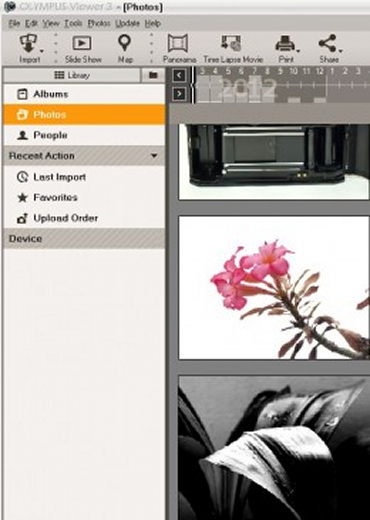
That rules out use of the function for sports, nature, family photos and the like, but if you're shooting landscapes, architecture, still lifes, product photography and the like, you should be just fine. You'll also need to be shooting with the camera mounted on a tripod and with a subject that's pretty much static, because any subject or camera motion during capture of the eight frames used to make a High Res Shot Mode image will prevent the technique from working. If your glass isn't up to the job, no amount of technical wizardry is going to improve your results. For one thing, you're going to want to be using reasonably high-quality lenses to get the best results. Of course, there are some gotchas when shooting at such high resolutions. As you can see, moving subjects like the flags aren't rendered properly both camera and subject should be static for the best results. You just won't quite reach the 80-megapixel limit without processing your images on a computer.)ġ00% crop from the High Res Shot Mode image above. (And if not, you can still shoot 50-megapixel JPEGs in-camera, or process your High Res Shot Mode raws in-camera to obtain a 50-megapixel JPEG after the fact.
#Olympus viewer 3 review upgrade#
You'll need to be using at least a reasonably recent computer, as the plug-in and Viewer 3 need a 64-bit processor / operating system and 4GB of memory, but if you've made an upgrade in the last few years it's very likely your computer will meet the grade. Or you can use the newly-upgraded Olympus Viewer 3, which now supports processing of High Res Shot Mode raws.
#Olympus viewer 3 review free#
Adobe Camera Raw 9.5 and Lightroom CC 2015.5 / Lightroom 6.5 now natively support PEN-F High Res raw files, as does a free Photoshop CS5 or higher High Res Shot plug-in from Olympus. To reach these lofty heights, though, you'll need to process your raw files on your computer. Switch to raw format, and you'll be able to capture imagery at an astounding resolution of 80 megapixels! Where the E-M5 II was limited to a 40-megapixel JPEG or a 64-megapixel raw file in High Res Shot Mode - and where the Pentax K-3 II still records at its native sensor resolution of 24 megapixels - the Olympus PEN-F will be able to provide a whopping JPEG resolution of 50 megapixels in High Res Shot Mode. And as an added bonus, the higher resolution of the Olympus PEN-F's new image sensor means that there's more data than ever for this new camera to work with. That makes it all the more exciting, in no small part because it allows resolution akin to what you'd expect from a medium-format camera, but in a body that's even more compact than that of the E-M5 II. Shortly after Olympus launched its first High Res Shot Mode-equipped model, rival Ricoh brought a similar function to its Pentax K-3 II DSLR - albeit with some differences in the implementation - and the game was truly on!Īnd now, Olympus' High Res Shot Mode arrives for the first time in a PEN-series camera.

What made the Olympus E-M5 II so exciting was that it brought oversampling to an affordable, interchangeable-lens camera which already had reasonably high resolution, bringing the potential for extremely high-res imagery to the masses.
#Olympus viewer 3 review iso#
Image shot with the Olympus PEN-F at ISO 200 using High Res Shot Mode (There are likely others which have done the same, but if so they escape our memory right now.) And over the years, we've seen a handful of fixed-lens consumer cameras such as the Ricoh RDC-7, JVC QX3 HD and JVC QX5 HD use a similar approach. The technology itself isn't actually new it dates back at least as far as the late 1980s to the ProgRes 3000-series cameras from Kontron.

These sub-pixel sized adjustments let the sensor gather more information about its subject, resulting in the advantages mentioned above. Between each frame's capture, the camera made very subtle adjustments to the positioning of its sensor-shift image stabilization system. In effect, what the E-M5 II did was to capture eight images in quick succession using an electronic shutter to avoid resolution-robbing vibrations. All of this was achieved thanks to a technique known as oversampling. Dubbed High Res Shot Mode, this was the cause of much excitement because it allowed a pretty impressive step forward in resolution, a significant reduction in noise levels, and an impressive resistance to moiré artifacts. In early 2015, Olympus debuted a brand-new feature in its enthusiast-grade E-M5 Mark II. Astounding resolution from High Res Shot Mode


 0 kommentar(er)
0 kommentar(er)
